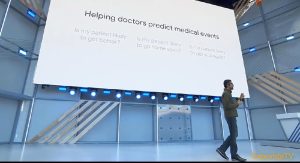To tackle the new coronavirus, scientists are accelerating the vaccine process
9 min read
As a mystery illness started spreading in China in late December, researchers at Inovio Pharmaceuticals were keeping a close eye on what was happening, even before anyone knew the cause was a coronavirus.
The company, based in San Diego, is no stranger to the viruses. After MERS, which is caused by a different coronavirus, emerged in 2012, Inovio was one of the first to develop a still-experimental vaccine for the disease. In the new outbreak, as soon as Chinese researchers posted the genetic makeup of the virus, dubbed SARS-CoV-2, the company’s scientists sprang into action.
“We’d all hoped that there would be enough overlap that our previously developed MERS vaccine would be helpful in this case,” says Kate Broderick, Inovio’s senior vice president for research and development. Like MERS and SARS, the new virus is a coronavirus that uses RNA as its genetic material.
But in-depth analysis revealed that the two coronaviruses are too different for a vaccine against MERS, also known as Middle East respiratory syndrome, to take down the new virus. So the company’s researchers set about designing a new vaccine.
That design relies on a relatively new approach to vaccine creation, one that the researchers used to develop the MERS vaccine. Traditional vaccines are composed of weakened or killed forms of viruses or parts of viruses, including purified proteins. When injected into a person, the immune system recognizes the virus as an invader and produces antibodies to stave off future invasions. But growing enough debilitated viruses or purifying enough proteins to make vaccine doses for millions of people can take months or even years.
So Inovio and other companies have developed ways to make vaccines much more quickly. For their SARS-CoV-2 vaccine, Inovio scientists convert the virus’s RNA into DNA and select pieces of the virus that computer simulations have suggested will prod the immune system into making antibodies. Those selected bits of DNA are then inserted into bacteria, which produce large quantities of protein snippets to be used in the vaccine. This approach drastically shortens the time it takes to make a vaccine. A traditional vaccine takes two to three years to develop. For Inovio’s product, it took three hours to design and about a month to manufacture, Broderick says.








